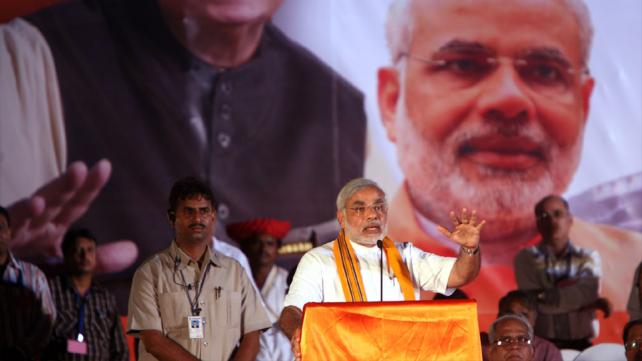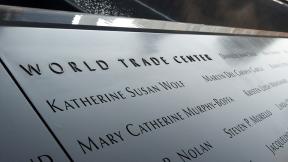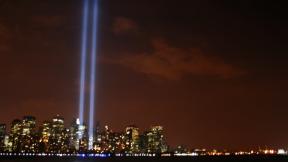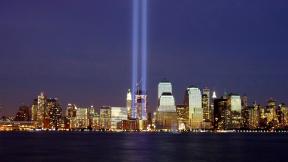
Gone is the time when Gandhi, his ideas, and his Congress party were the dominant players in India. Today, the dominant party in India is the very same whose member was convicted of killing Gandhi.
RSS
Marching in a khaki uniform reminiscent of the fascist movement of the last century, RSS is the mother of today's leading Hindu militant parties in India. It was established in 1925. Since its inception, it has been dedicated to the overthrow of the secular programs of the National Congress, which was led by Mohandas Gandhi and then Jawaharlal Nehru.
The RSS gained notoriety in 1948 after one of its members, Nathuram Godse, murdered Gandhi for allowing the establishment of Pakistan and being too accommodating of Muslims.
This led to the party being banned that same year. However, this ban was lifted the following year after the RSS drafted a constitution that was acceptable to the government. But very loyal RSS members refused to give up their affiliation to join the Congress and, instead, focused their political energies on the BJP after its founding in 1951 (see below). The organization was banned once again in the seventies because of its activities.
According to the RSS, Christians and Muslims are basically converts from Hinduism and should be reintegrated into Indian Hindu culture. If they prefer not to integrate, they should leave India.
BJP
The BJP is currently India's ruling party. It was established in 1951 and until 1980, was known as the Bharatiya Jana Sangh (BJS). It was set up as the political wing of the RSS.
The BJP is part of the Sangh Parivar, which is the family of Hindu fundamentalist organizations spawned and led by the Rashtriya Swayamsewak Sangh (RSS).
The party currently rules through a coalition that has meant softening the party's more militant Hindu positions. Prime Minister and BJP head Atal Bihari Vajpayee has gone out of his way to stress the importance of secular politics on a number of occasions.
It was only 30 years after its creation, during the 1980s, that the BJP really became a major player on the Indian political scene. A number of events in that decade, including the mass conversion of lower-caste Hindus to Islam pushed the BJP's close affiliate, the VHP (see below), to the forefront.
Together, the two parties were able to whip up Hindu support for a re-defined communal force, organizing a series of religious meetings, cross-country marches and processions throughout the decade.
In addition, during the 1980s, the BJP launched an electoral strategy of striving to win the support of the "Hindu" vote.
Politically, though, the decade marked the failure of the BJP. In 1984, the party won only two seats in the parliamentary elections. After this defeat, the party decide a change in strategy was needed.
One of these was a change in leadership. Atal Bihari Vajpayee, who was then party president, was replaced by L.K. Advani (now the country's Interior Minister).
It was under Advani's leadership that the party began to appeal to Hindu activists by criticizing measures it considered as pandering to minorities. For instance, it advocated the repeal of the special status given to the occupied Muslim majority state of Jammu and Kashmir.
At the same time, it cooperated more closely with other RSS affiliates, especially the VHP, by rousing Hindu passions. One campaign that gained prominence was the effort to convert members of the untouchable castes back to Hinduism from Islam.
It was also the BJP which, in 1984, decided to take up the case for tearing down Babri Masjid in Ayodhya and erecting a Hindu temple on its ruins. Despite no historical or archaeological evidence, the BJP and its followers claimed that the mosque had been built on the ruins of a Temple dedicated to the Hindu god Ram. The BJP succeeded in making this an issue which brought together Hindus of all stripes in India.
Eight years later, in 1992, the BJP succeeded in making the Babri mosque issue a common cause amongst the country's militants. In December of that year, inspired by BJP politicians, 200,000 Hindu militants shouting slogans such as "Hindustan is for the Hindus" and "Death to the Muslims" stormed the Babri mosque and destroyed the mosque using sledgehammers, picks, and bare hands. The rallying point for Hindu militancy was now reduced to rubble.
The destruction led to protest from Muslims, about 1,400 of whom were massacred with the complicity of the area's mostly Hindu police.
VHP
VHP stands for Vishwa Hindu Parishad. The VHP is also part of the Sangh Parivar, which is the family of Hindu fundamentalist organizations spawned and led by the RSS. It was members of this non-political party who were involved in the hooliganism which led to the Godhra train burning incident at the end of February, which in turn sparked the latest violence in India.
The VHP was founded in 1964 by a group of senior leaders from the RSS to give Hindus what they believed would be a clearly defined sense of religious identity and political purpose.
But this apparently benign aim masked an uglier reality: the desire to "Hinduize" India at the expense of its minorities, the largest one being Muslims.
For instance, during the 1980s, the VHP, working with the BJP, developed into a dynamic political force by using religious symbolism to rouse Hindu passions. In particular, the duo came to national attention through their campaign to convert back to Hinduism members of the certain castes, particularly "untouchables", who had converted to Islam.
Since 1984, the VHP was and remains at the forefront of the campaign to "reclaim" Babri Masjid. It has encouraged villagers throughout India to hold religious ceremonies to consecrate bricks made out of their own clay and send them to be used in the construction of the Ramjanmabhoomi Temple in Ayodhya.
For several years now VHP has continued its violent campaign to build a Hindu temple at the site of the demolished Babri mosque in Ayodhya (UP), in violation of the ruling of the Supreme Court of India, which has mandated that this issue will be decided by the court of law. In the last few weeks their campaign has resulted in large scale violence against Muslims in various cities in the state of Gujarat, with hundreds of Muslims reported killed.
For over a decade now, VHP has had branches in US, with their headquarters in the state of Connecticut. VHP is registered as a charitable organization under IRS Section 501-3-C. Every year VHP (USA) collects millions of dollars in tax-exempt donation from Hindus living in the United States. Every year top leaders of VHP visit the United States for fundraising campaigns. These funds are used directly for VHP’s violent campaigns to terrorize Muslims and Christians in India and to attack their places of worship.
Photo Attribution: http://commons.wikimedia.org/wiki/File:Modi_campaings_for_the_BJP.jpg








Comments
Well truly said!
Well truly said!
I am a British Sikh and have recently started reading more about the hindu persecution of Sikhs in India. It is important that people are aware that the methods being used by the hindu extremists on Muslims and Christians today were tried and tested on the Sikh community in Deli 1984. We should get a mention in your article, because the sikh people have gone through more suffering over the last 20 years than any other minority in India. And yet 60% of indias armed forces are made of sikhs. 90% of Indias martyrs were sikhs when we tried to liberate under British rule. I found your article chilling but very true. It's important that we let the world know whats going on in the worlds "biggest democracy".
Location
Hindu extreemism
India is not biggest democracy but biggest hypocracy. This time Pakistan will support Khalistan if this movement fet active.
Location
Add new comment